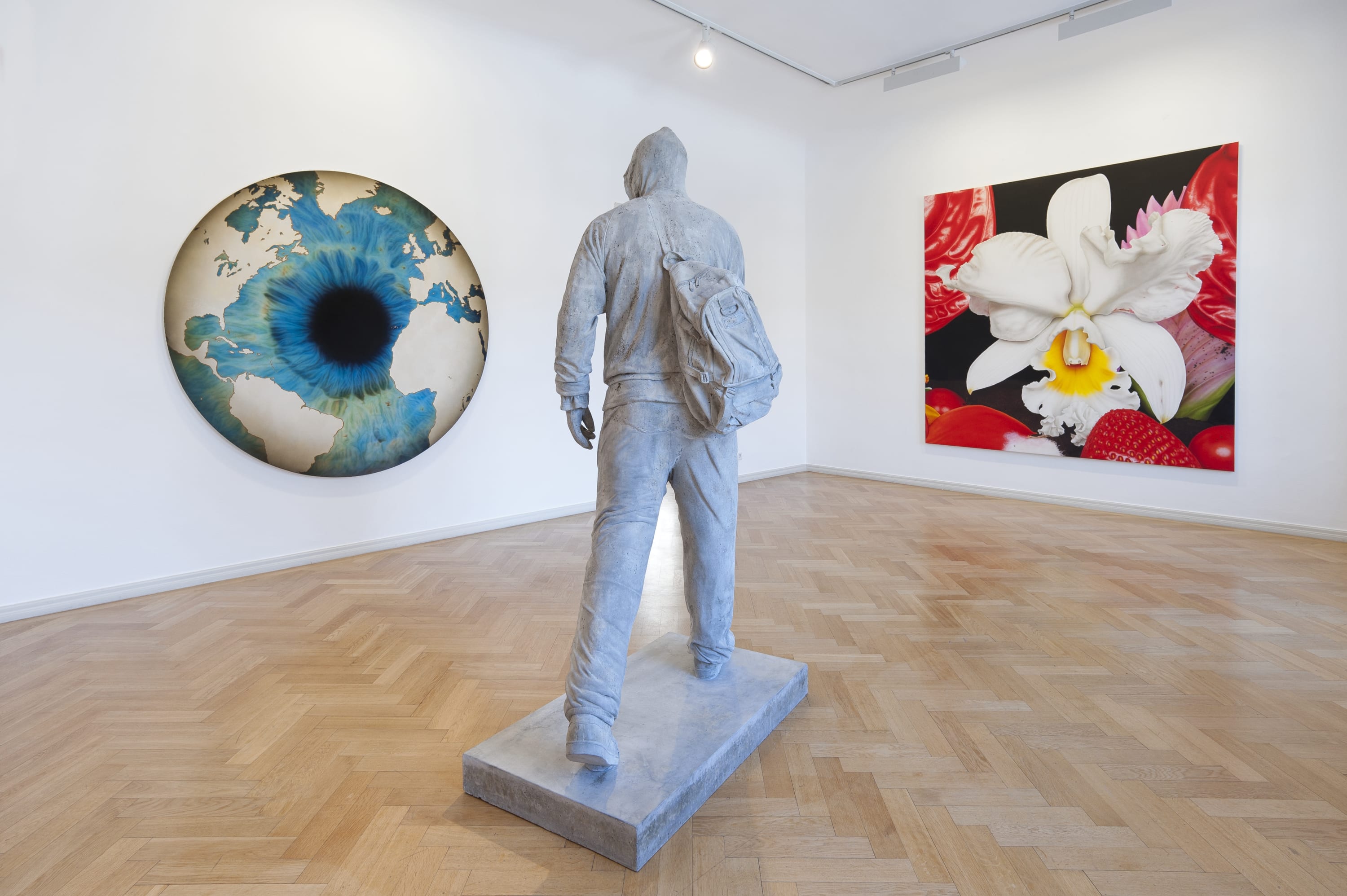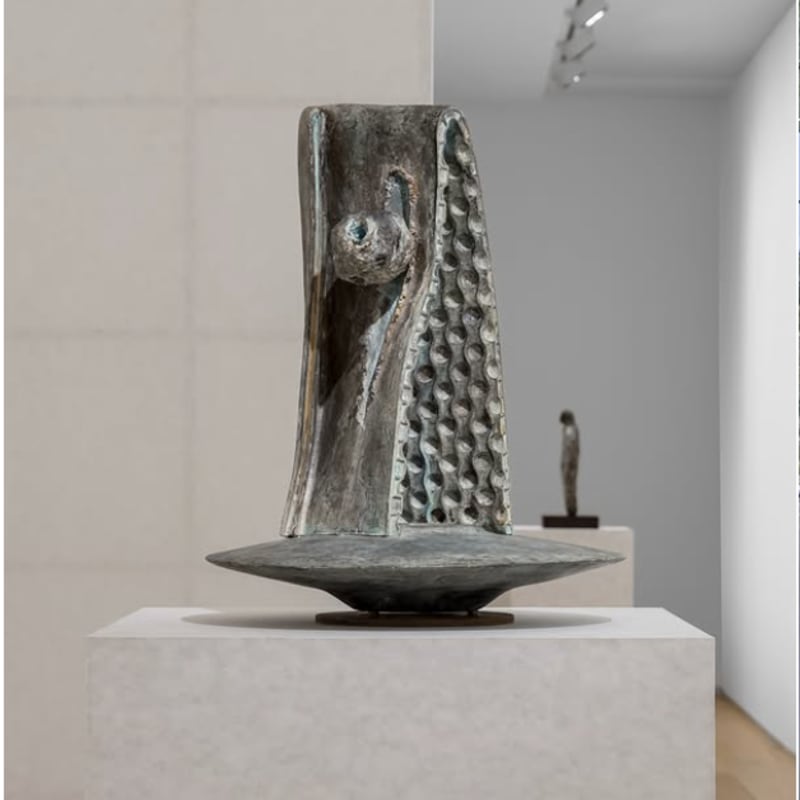

Marc Quinn Brave New World
Overview
For this exhibition, Marc Quinn has created his first outsize, 3m-high realistic shell, as well as several smaller works on the same subject, all of them bronzes.
Galerie Thaddaeus Ropac Salzburg presents a solo exhibition of works by Marc Quinn, who became known during the 1990s as one of the YBA (Young British Artists). He was born in 1966 in London, where he has lived and worked since he graduated in Art History from Cambridge University in 1985.
For this exhibition, Marc Quinn has created his first outsize, 3m-high realistic shell, as well as several smaller works on the same subject, all of them bronzes. The pale, shimmering patination of the bronze and the title The Origin of the World refer to the iconic painting L’Origine du monde (1866) by Gustave Courbet, so that the viewer perceives the work as a monumental symbolic vulva. Sandro Botticelli’s Birth of Venus (c 1482) shows the goddess risen from the sea in a shell, which is in classical iconography seen as a protective and life-giving element. Cocooning, the desire to withdraw into secure, comfortable surroundings, is a contemporary theme which is reflected in the often soft, rounded design of everyday objects. Withdrawal into this symbolic softness, this feeling of security, signifies temporary escape from a reality which many people perceive as increasingly hard; they feel alienated from real life through those after-effects of globalisation which alter social structure – such as the loss of contact with nature, of long-term identity-shaping, and of established tradition.
In his photo-realistic Flower Paintings, the artist explores the often narrow boundary between life and death. The luscious blooms are captured on canvas at the height of their splendour; but inherent in this very moment is a morbid charm which evokes the idea of transience – a traditional motif in 17th-century Dutch still lifes – which, like the skull in the hands of the bronze girl, suggests a comparison with Vanitas symbolism.
Unlike earlier oil paintings of flowers in bloom, here the artist casts streaks of colour over the realistic enlarged flowers, in a kind of action-painting, rather like Jackson Pollock's "drip paintings" in the late 1940s. On the other hand, these colourful streaks are reminiscent of the early 1960s décollages of the "affichistes", who tore out sections of superimposed posters to expose the underlying layers. The colours and the pastosity of the streaks look almost three-dimensional on the flat surface of the canvas, so that the viewer might be persuaded by the trompe-l'œil effect to see the streaks as rents in the perfect façade.
Other new works by Quinn are portraits of very different, familiar models from the fashion industry, as for instance the bronze sculpture of Zombie Boy (Rick Genest), a male model with full-body tattoos. The colourful Fingerprint Paintings are also a reference to portraiture, as representing personal identification by means of fingerprints.
Brave New World (1932), Aldous Huxley's famous dystopian futuristic novel, describes a totally determined social order which starts with cell fusion in a test-tube. The embryos are manipulated according to genetic disposition and abilities to fit their intended caste, and their behaviour is further conditioned after birth to correspond to their future status and function. Constant satisfaction leaves the adults with a permanent lack of will or emotion. Resistance, arising from inadequate adaptation due to systemic errors, develops the plot through the fatal entanglement of individual characters.
Marc Quinn's sculptures and canvases show images of nameless insurgents whose faces remain anonymous in the shadow of their hoods. These are images of anarchy and revolution, rebellion with the aim of pure destruction. Here is a first statue of an insurrectionist from the London riots of August 2011; it is made of cement, so that the material of the street becomes an inherent symbol of the rioting.
"O brave new world, that has such people in 't", exclaims Miranda, in Act V of Shakespeare's The Tempest (1610/1611).
Marc Quinn is currently represented in a solo exhibition in the Kunsten Museum of Modern Art, Aalborg/Denmark (until 29 April), previously held in 2011 in the Kistefos Museum, Oslo/Norway. His work has been distinguished internationally in many major solo and group exhibitions, including the Tate Gallery/London (1995), Fondazione Prada/Milan (2000), Tate Liverpool (2002), Irish Museum of Modern Art/Dublin (2004), Groninger Museum, Groningen (2006), MACRO, Rome (2006), DHC/ART Fondation pour l'art contemporain, Montréal (2007), Fondation Beyeler, Basel (2009) and Goss Michael Foundation, Dallas (2010). He püarticipated in the 2003 Venice Biennale and the 2004 Gwangju Biennale. From 2005 until 2007 Quinn displayed the controversial armless statue Alison Lapper Pregnant on the Fourth Plinth in London's Trafalgar Square.

















































































































































































